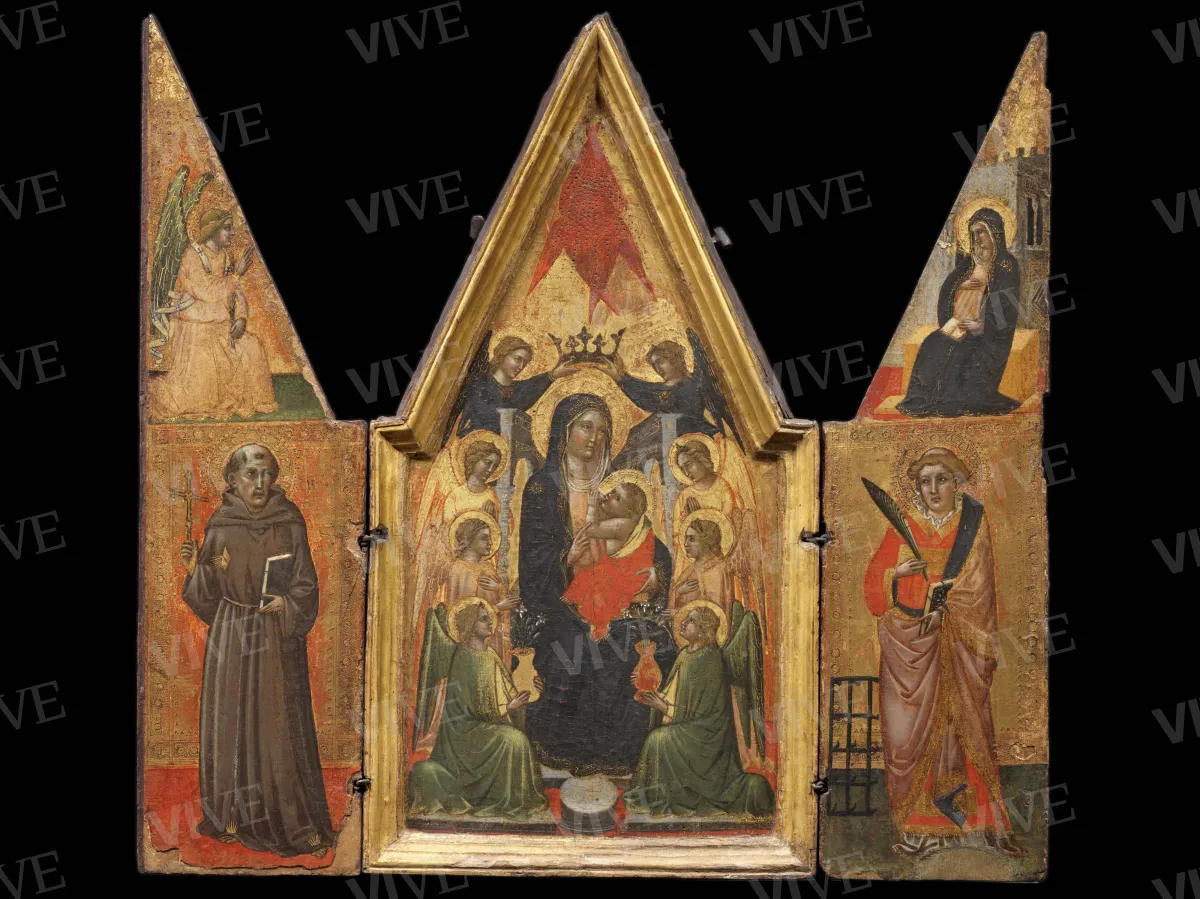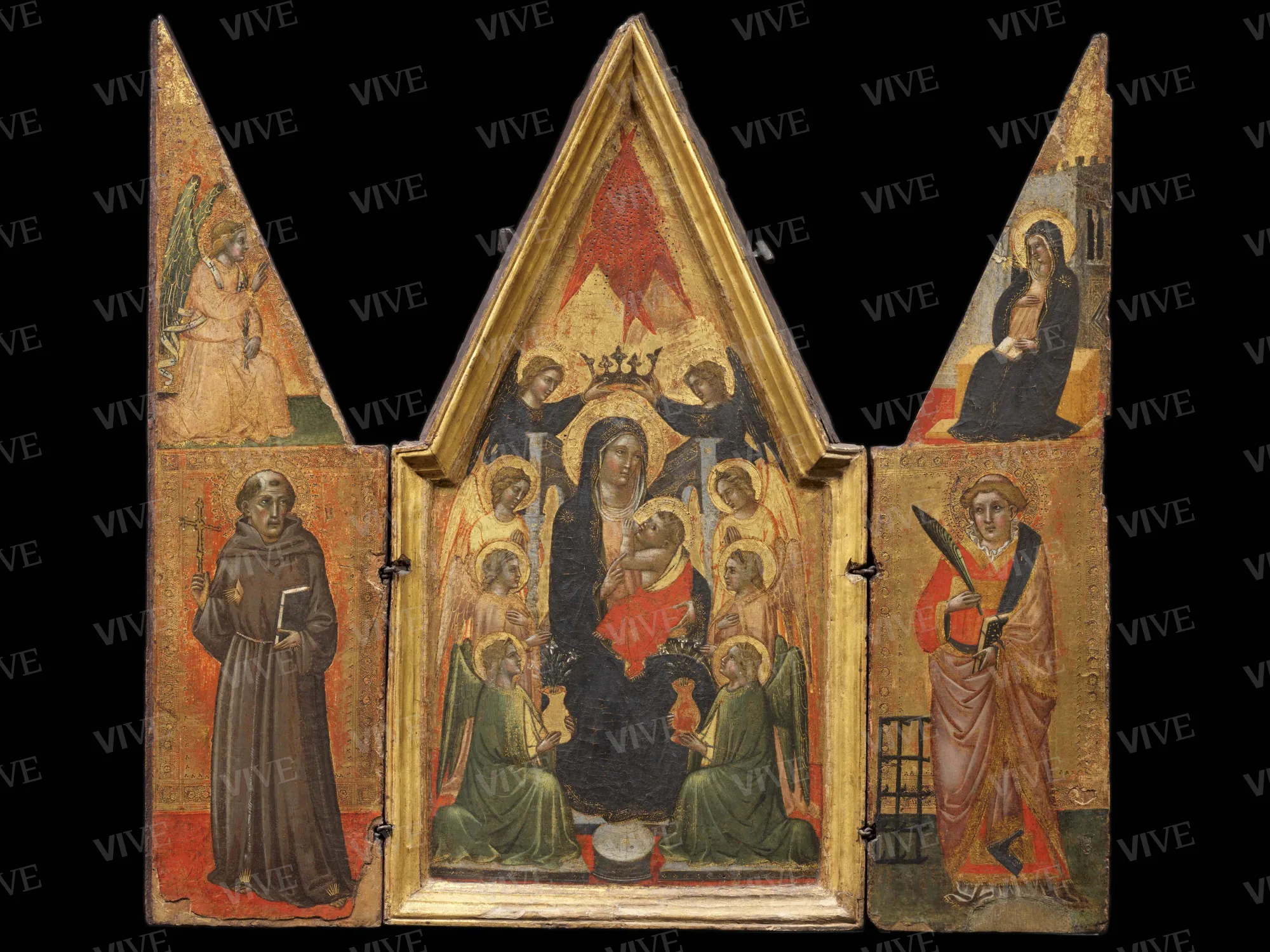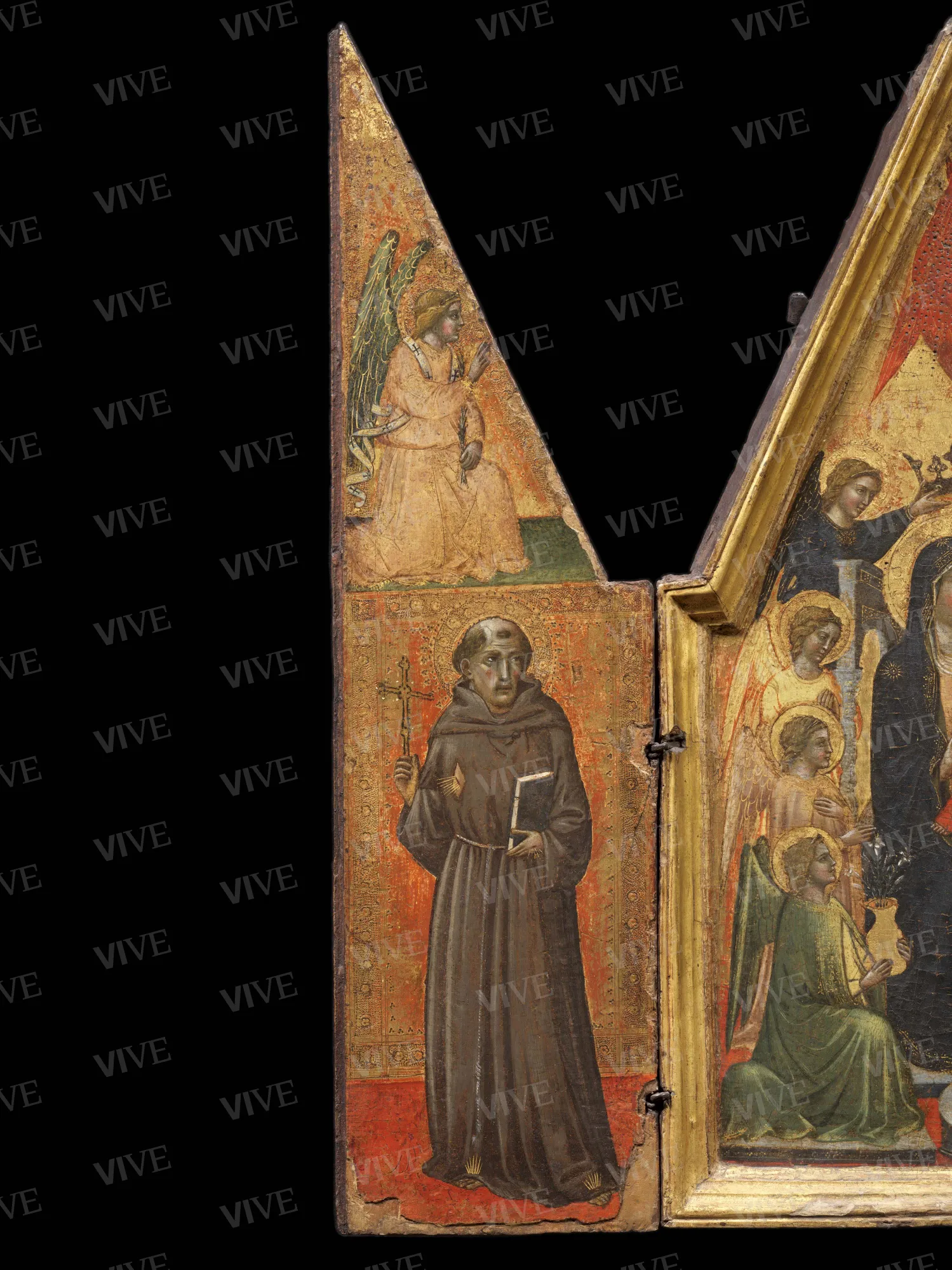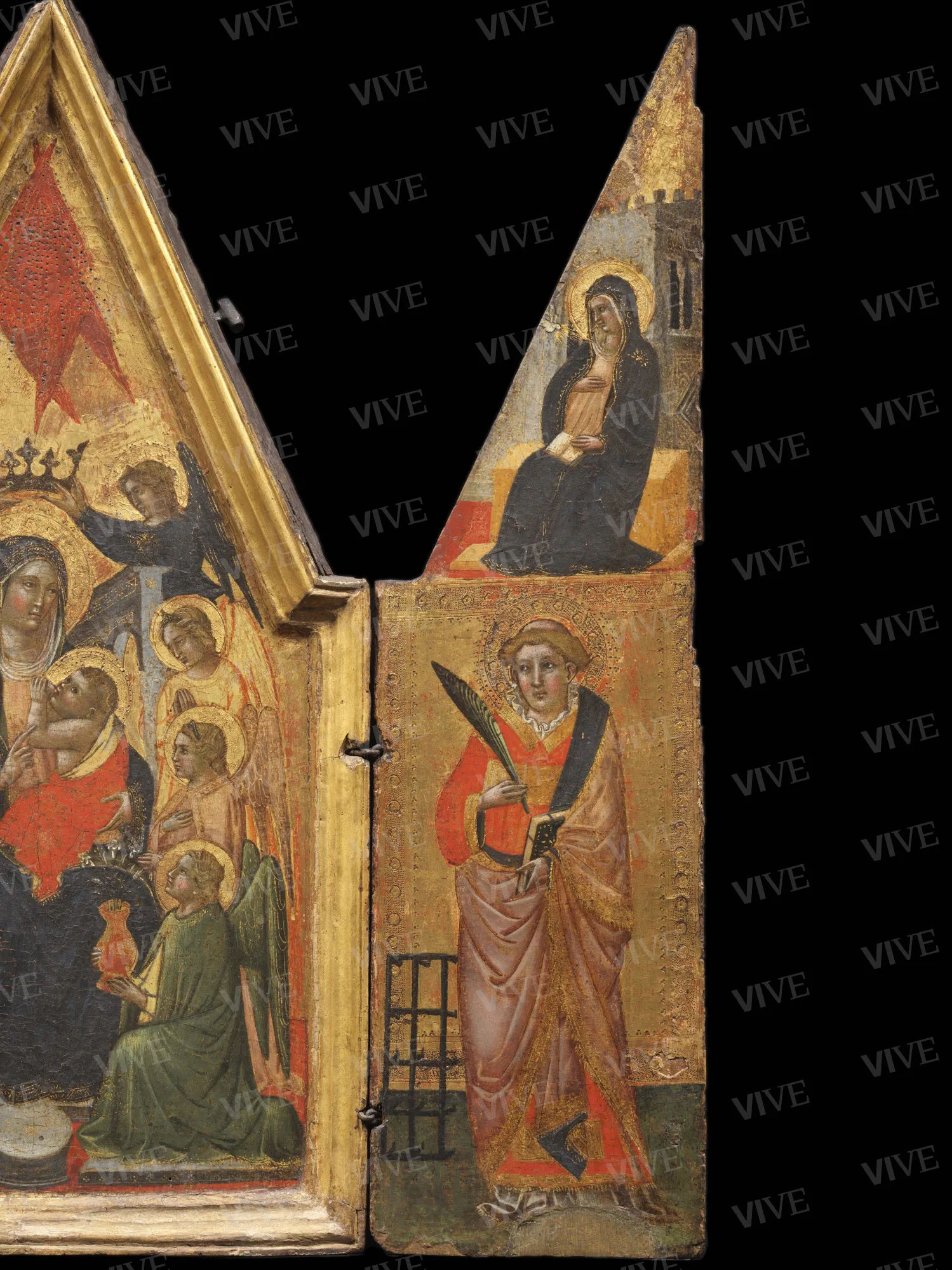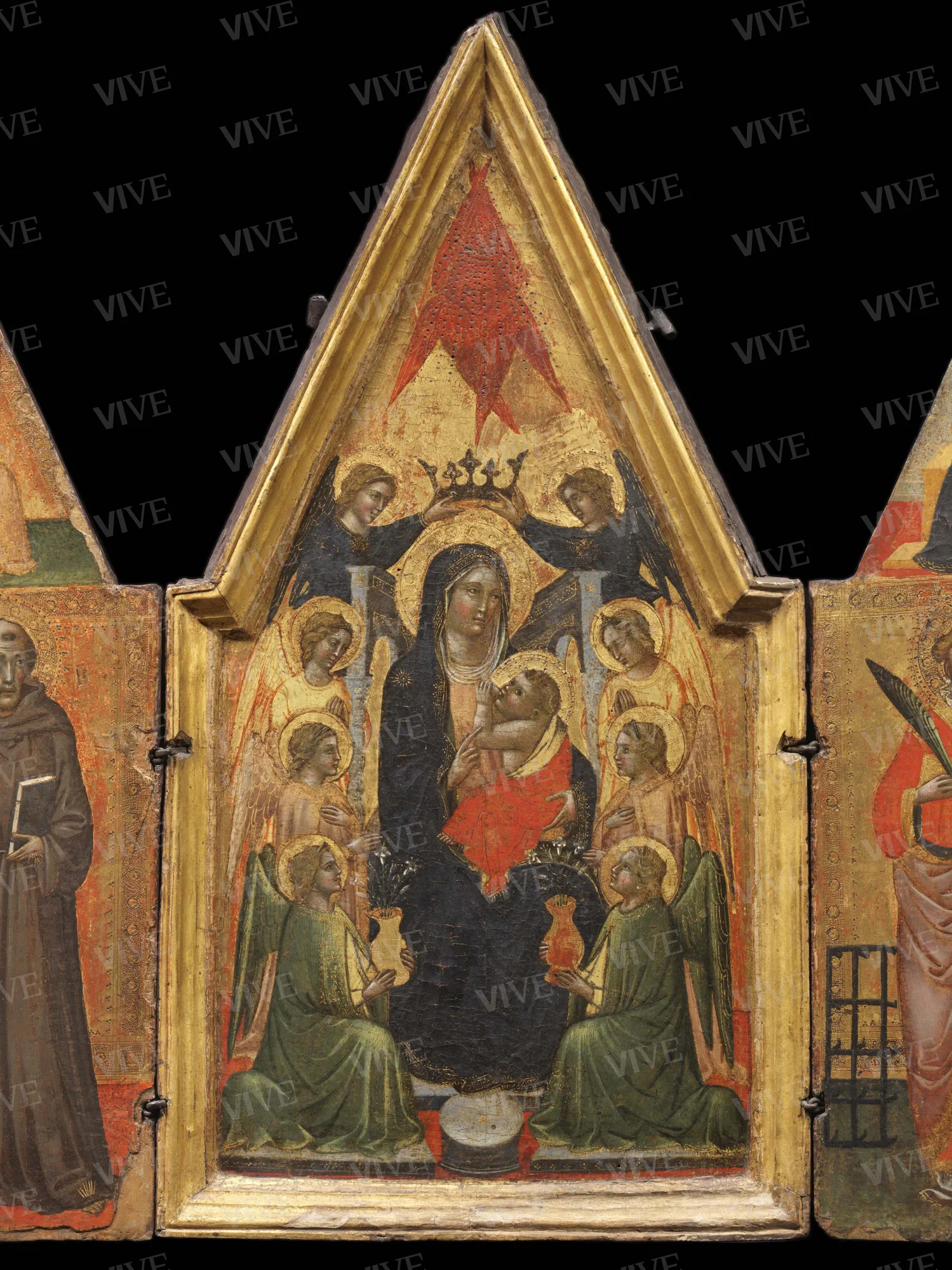Madonna Enthroned and Child with Angels
Tuscan milieu 1400-1410 circa
This triptych with movable doors features a Madonna enthroned with Child, flanked by two groups of angels and crowned by two of them. On the doors, Saint Francis is depicted on the left and Saint Lawrence on the right, both with their iconographic attributes clearly displayed. The cusps feature the Annunciation. The artwork can be attributed to the early fifteenth-century Tuscan area.
This triptych with movable doors features a Madonna enthroned with Child, flanked by two groups of angels and crowned by two of them. On the doors, Saint Francis is depicted on the left and Saint Lawrence on the right, both with their iconographic attributes clearly displayed. The cusps feature the Annunciation. The artwork can be attributed to the early fifteenth-century Tuscan area.
Details of work
side doors: height 54 cm; width 14 cm.
Catalog entry
This triptych with movable doors features a Madonna enthroned with Child, flanked by two groups of angels and crowned by two of them. On the doors, Saint Francis is depicted on the left and Saint Lawrence on the right, both with their iconographic attributes clearly displayed. The cusps feature the Annunciation.
Although the artwork has undergone prior restoration, a handwritten note in the museum archive hard-copy entry indicates that it is not in excellent condition. The central panel shows evidence of gold being reapplied to the original bolus in several areas, except around the top near the seraph. A similar restoration effort has been made on the frame, which is now entirely repainted in purple. The hinges, likely original, have been disassembled and reassembled, as evidenced by non-pertinent grooves that suggest tampering rather than natural wear over time.
The paint on the flesh tones appears peeled, and the lacquers used for the clothing of Gabriel the Archangel, the Virgin, and one of the angels surrounding the Madonna have discolored, leaving only a faint pink hue beneath the oxidized paint. It is also unclear why the seraph in the center of the cusp was painted and later punched, which seems to be an unusual procedure.
Despite these issues, certain areas still display the delicate execution of the work. For example, the mordant gilding, which in some parts is still intact, finely decorates the edges of the robes and highlights Saint Francis’s stigmata, from which rays of light emanate through the heavy habit.
The literature on this painting is limited. Santangelo (1948, p. 35) referenced an opinion by Roberto Longhi, who attributed the work to an anonymous Florentine artist active between 1420 and 1430. Longhi also noted the influence of Giovanni dal Ponte and the young Masaccio on this piece.
Federico Zeri suggested the same in 1955 (Zeri 1955, pp. 9–10, no. 140), although in a photo in the Fondazione Zeri photo library it is attributed to Alvaro Pirez (Fototeca Zeri, envelope 133, card no. 11448).
In essence, these references may not accurately capture the style of this painting. While the face in Saint Francis shares similarities with Giovanni dal Ponte, the full figures and squared folds are more aligned with the work of Agnolo Gaddi, particularly noticeable in the large angels kneeling at the feet of the Virgin. Similarly, the Announcing Archangel resembles the same subject depicted by Agnolo Gaddi in the frescoes of Prato Cathedral.
If these points of contact suggest the author of the panel is someone within Agnolo’s circle in Florence, other details—such as the physiognomies of the characters with their lively gaze as seen in Saint Lawrence, and the more detailed painting with minute brushstrokes—indicate that alternative theories are possible.
According to Andrea De Marchi, this piece may represent the early period of Battista di Gerio, a Pisan artist active from the late fourteenth century to the early fifteenth century. This suggestion warrants serious consideration, particularly as the facial features of Saint Lawrence and the Virgin Annunciate closely resemble those typically associated with the Pisan painter’s lively eyes and rounded physiognomy. While this is an intriguing hypothesis, it can only be confirmed after meticulous restoration, which would enhance the clarity of the artwork and hence its interpretation.
Alessandro Delpriori
State of conservation
Compromised.
Provenance
Rome, Collezione Giulio Sterbini;
Rome, Collezione Giovanni Armenise, 1940;
Rome, Museo di Palazzo Venezia, 1940 donation.
References
Santangelo Antonino (a cura di), Museo di Palazzo Venezia. Catalogo. 1. Dipinti, Roma 1948, p. 35;
Zeri, Federico (a cura di), Catalogo del Gabinetto fotografico Nazionale. 3. I dipinti del Museo di Palazzo Venezia in Roma, Roma 1955, pp. 9-10, n. 140.

